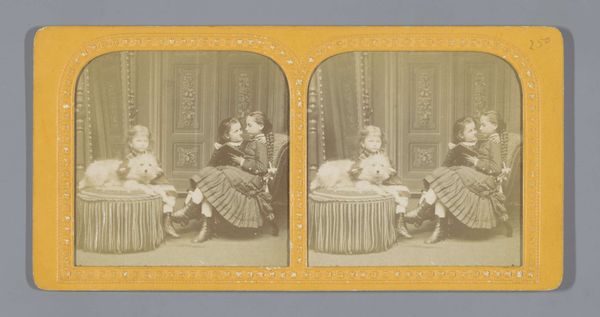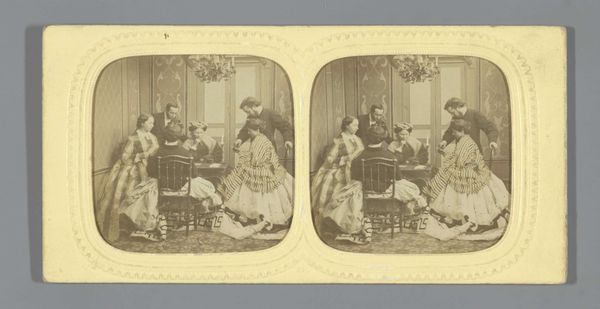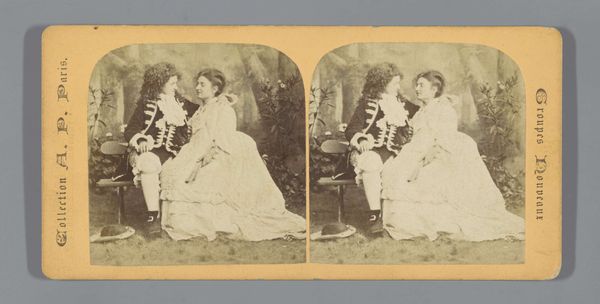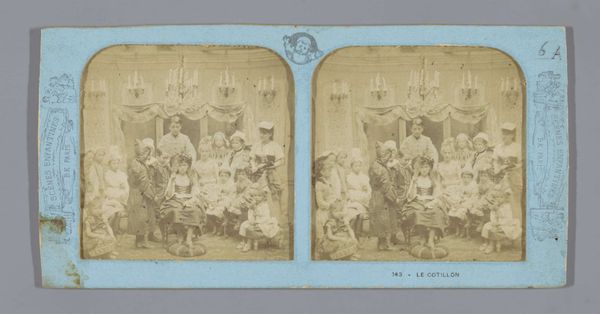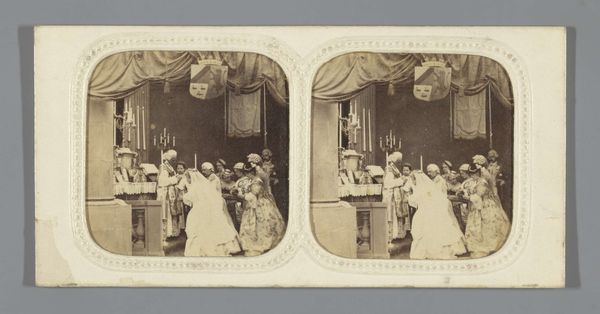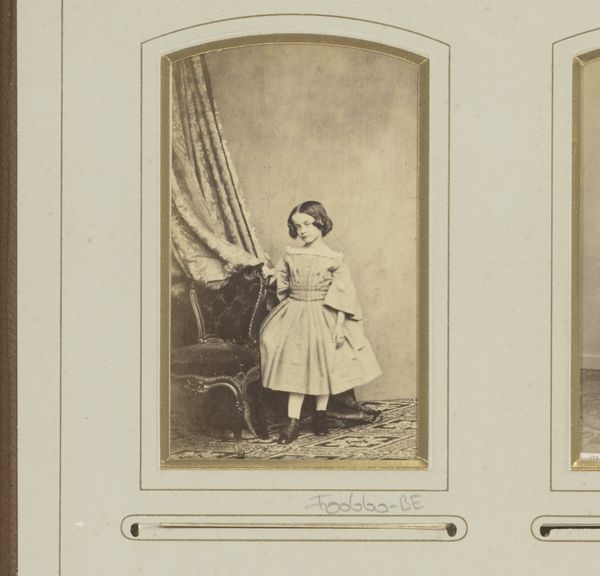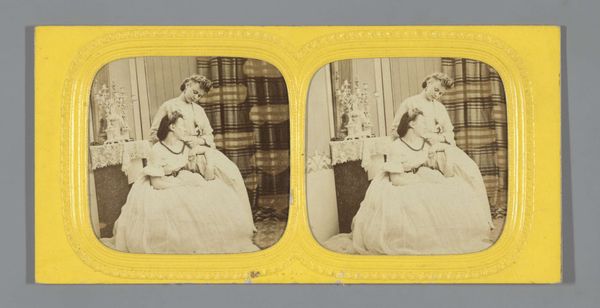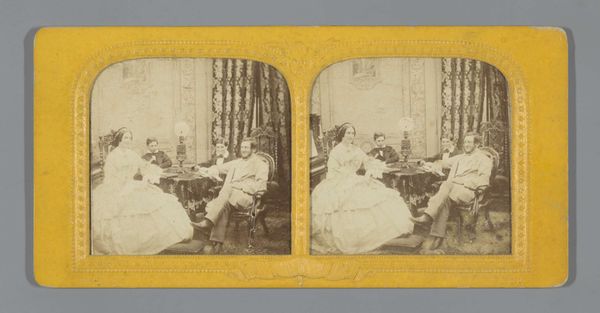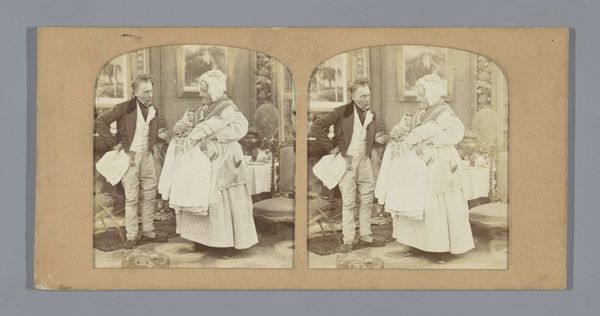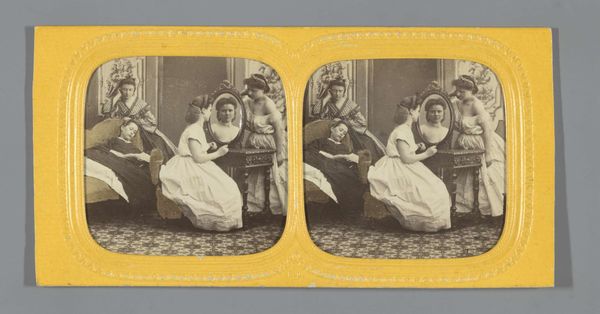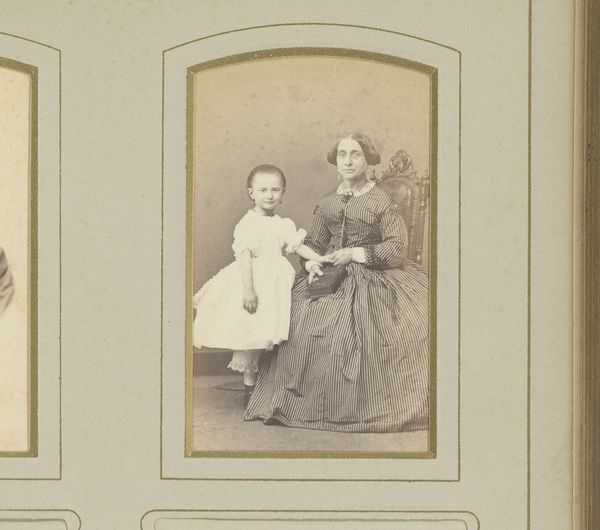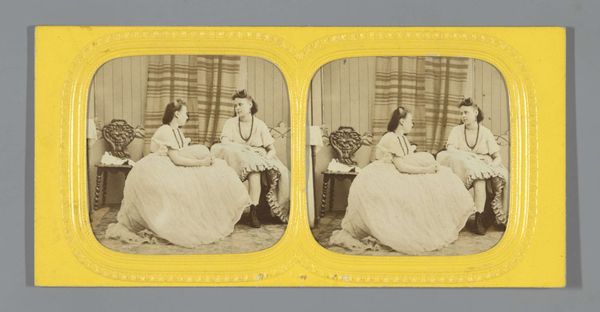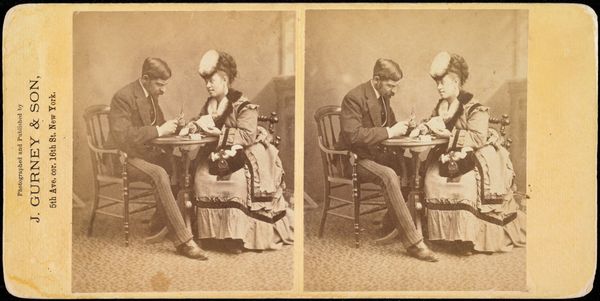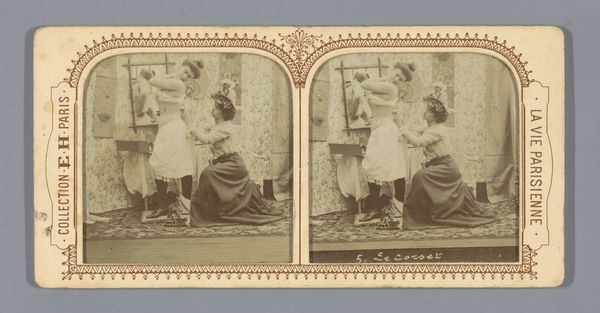
photography
#
portrait
#
photography
#
genre-painting
Dimensions: height 85 mm, width 171 mm
Copyright: Rijks Museum: Open Domain
Curator: Here we see an anonymous photographic piece entitled “Kinderen spelen met pop”, or “Children playing with doll”, created sometime between 1855 and 1875. What do you make of it? Editor: There’s something about this scene that feels… stifled. It's a supposedly intimate moment of childhood play, but the poses are so formal, the faces so grave. It's as if even leisure is subjected to societal constraints. Curator: That's a perceptive observation. The doll itself, being the focal point, speaks volumes. The doll as an icon signifies domesticity, motherhood, and the expectations projected onto young girls. The other child at the table also appears to be a boy. The clothing seems indicative of the children belonging to a wealthy family. The parents or other caregivers are positioned in the background, adding weight to that sense of constraint. Editor: Precisely. Dolls are not simply toys. They are powerful tools for social conditioning. Looking closely, it becomes obvious these children are participating in their training for the roles expected of them within a stratified social system. The parents, looming, represent these expected roles. The dolls are less objects and more like vehicles. Curator: The use of photography itself lends a certain gravity. Photography was developing as a medium in the second half of the nineteenth century. The permanence captured here elevates a candid scene of genre-painting into a sort of declaration about that time. Do you see any potential symbolism here, beyond the overt theme of social roles? Editor: Perhaps the staging itself, a crafted reality made visible with developing technologies. What appears spontaneous is calculated. The smiles of innocence do not arrive. It offers the viewer an almost sociological snapshot into family hierarchies of the era. What could appear like a wholesome and loving scene becomes more of a staged environment. Curator: It does give us pause to consider these early photographs. The constraints of the camera might mean people were asked to hold certain stances, or there may even have been elements of artificial backgrounds included, not present in the original family scene. Editor: Indeed. The piece really makes you wonder about how children, especially female-presenting children, were conditioned during that period in preparation for the society into which they were about to inherit. Curator: This photograph, while seemingly straightforward, offers many levels for interpretation, whether about art production, about social conventions, or family psychology. Thank you for helping me open my mind further. Editor: My pleasure. Examining artworks from multiple viewpoints keeps our social history vivid.
Comments
No comments
Be the first to comment and join the conversation on the ultimate creative platform.
